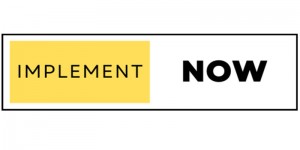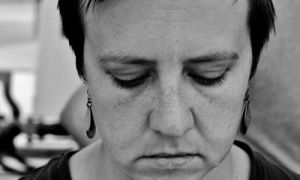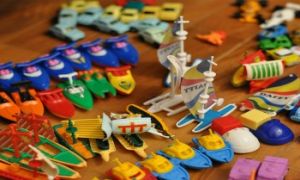According to the Educators’ Guide to the Early Years Learning Framework, documentation is the practice of recording and creating evidence of learning and the learning progress, helping make it visible. Though documentation is mandated to meet regulatory and pedagogical purposes, there are no prescriptive rules about how it may be done. The following article provides strategies for documenting in an early childhood setting.
Purpose Is Paramount
A good place to start is by getting a thorough understanding of why you are documenting in the first place. Find out what the standards, learning frameworks and, if relevant, the funding agreements expect from the documentation process. For example, documentation is both a regulatory requirement and integral to Quality Area 1 of the National Quality Standard (NQS).
Include Variety
There are many electronic, visual and paper-based ways to document the educational program and assessments or evaluations. Apart from regular examples of documentation like wall displays, artworks, floor books, scrapbooks, portfolios, video and audio recordings, photos or photographic sequences with captions, teacher observations, and visual organizers like mind maps and learning stories, you can use enrolment information, surveys, journals, notes from meetings with other teachers and parents, Quality Improvement Plans and feedback from families for the purpose of documentation. Use methods that are practical and relevant to the unique needs of the children and service.
Select Wisely
Ever since smartphones have made it easy to record visual and audio experiences, it has been tempting to use a lot of photos, video and audio clips for documentation. However, rather than piling on documentation, ask yourself how is it going to be used. The purpose of documentation is to assist in planning effectively for children’s current and future learning as well as communicating to others about the learning journey of children. As such choose documentation that provides meaningful information on your learners’ understandings, dispositions, knowledge and skills; additionally, see that your documentation is used to reflect on the efficacy of service curricula and practices.
Involve Children
When documenting, look for ways to include children’s voices and ideas. Educators can do this by asking children to choose their own artworks for wall displays or providing a caption for photographic sequences. Such inclusion not only promotes agency but extends children’s learning by reflecting on why they selected what they did.
Keep In Mind Privacy Issues
See that you have parental consent to take and save children’s photos for documentation. Also, have discussions with children about the different purposes of taking photos like to show their parents of how they spent their day or to capture fun time while storytelling. Ask whether they would like their photo taken and then extend it to how they feel about their photos being shared with other parents and families.
Access Resources
There are no mandated templates or programs but services and educators can take recourse to a variety of resources for documentation ideas. For example, the Early Childhood Australia Professional Learning Program includes several newsletters that explore the documentation and provide examples. Other resources are the Educators’ Guide to the Early Years Learning Framework and Educators’ Guide to the Framework for School Age Care and the Early Years Framework in Action Educators and care providers can also check out the Guide to the National Quality Framework to understand and apply the documentation requirements of the NQF.
Further Reading
The Planning Cycle To Document Children's Learning - The following article provides information on the Role Of Documentation In The Planning Cycle, The Purpose Of The Planning Cycle, What Should Inform The Planning Cycle, Five stages of the Planning Cycle and more.
Different Types Of Observation Methods - The following article provides examples of different types of observation methods that can be used to observe a child.
Descriptive Words For Documentation, Observations and Reports - The following article provides a list of descriptive words that can be used while writing.
References:
- Documentation – what, why and how
- Guidelines for documenting children’s learning
- Professional Learning Modules







 Here is the list of the EYLF Learning Outcomes that you can use as a guide or reference for your documentation and planning. The EYLF
Here is the list of the EYLF Learning Outcomes that you can use as a guide or reference for your documentation and planning. The EYLF The EYLF is a guide which consists of Principles, Practices and 5 main Learning Outcomes along with each of their sub outcomes, based on identity,
The EYLF is a guide which consists of Principles, Practices and 5 main Learning Outcomes along with each of their sub outcomes, based on identity, This is a guide on How to Write a Learning Story. It provides information on What Is A Learning Story, Writing A Learning Story, Sample
This is a guide on How to Write a Learning Story. It provides information on What Is A Learning Story, Writing A Learning Story, Sample One of the most important types of documentation methods that educators needs to be familiar with are “observations”. Observations are crucial for all early childhood
One of the most important types of documentation methods that educators needs to be familiar with are “observations”. Observations are crucial for all early childhood To support children achieve learning outcomes from the EYLF Framework, the following list gives educators examples of how to promote children's learning in each individual
To support children achieve learning outcomes from the EYLF Framework, the following list gives educators examples of how to promote children's learning in each individual Reflective practice is learning from everyday situations and issues and concerns that arise which form part of our daily routine while working in an early
Reflective practice is learning from everyday situations and issues and concerns that arise which form part of our daily routine while working in an early Within Australia, Programming and Planning is reflected and supported by the Early Years Learning Framework. Educators within early childhood settings, use the EYLF to guide
Within Australia, Programming and Planning is reflected and supported by the Early Years Learning Framework. Educators within early childhood settings, use the EYLF to guide This is a guide for educators on what to observe under each sub learning outcome from the EYLF Framework, when a child is engaged in
This is a guide for educators on what to observe under each sub learning outcome from the EYLF Framework, when a child is engaged in When observing children, it's important that we use a range of different observation methods from running records, learning stories to photographs and work samples. Using
When observing children, it's important that we use a range of different observation methods from running records, learning stories to photographs and work samples. Using The Early Years Learning Framework describes the curriculum as “all the interactions, experiences, activities, routines and events, planned and unplanned, that occur in an environment
The Early Years Learning Framework describes the curriculum as “all the interactions, experiences, activities, routines and events, planned and unplanned, that occur in an environment


